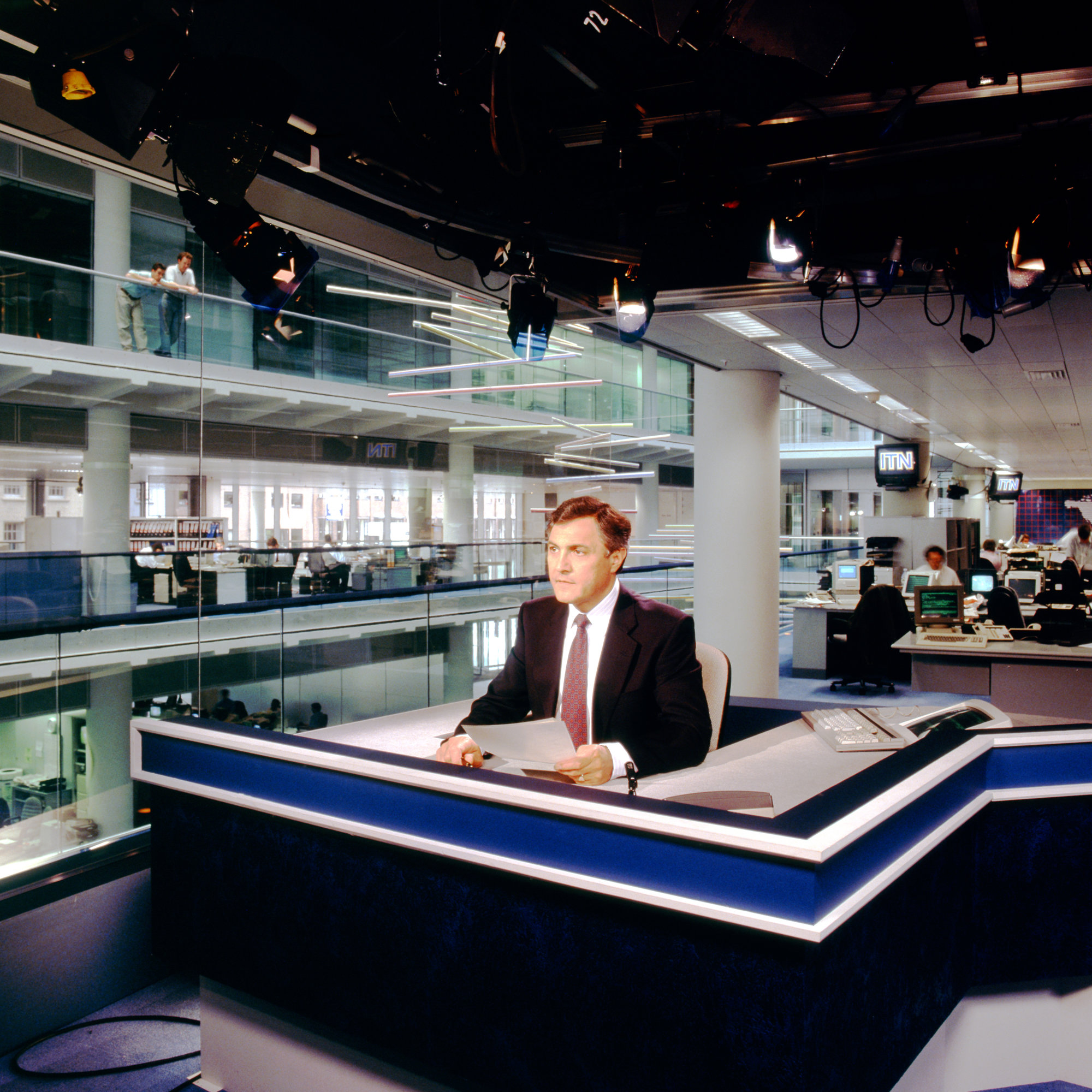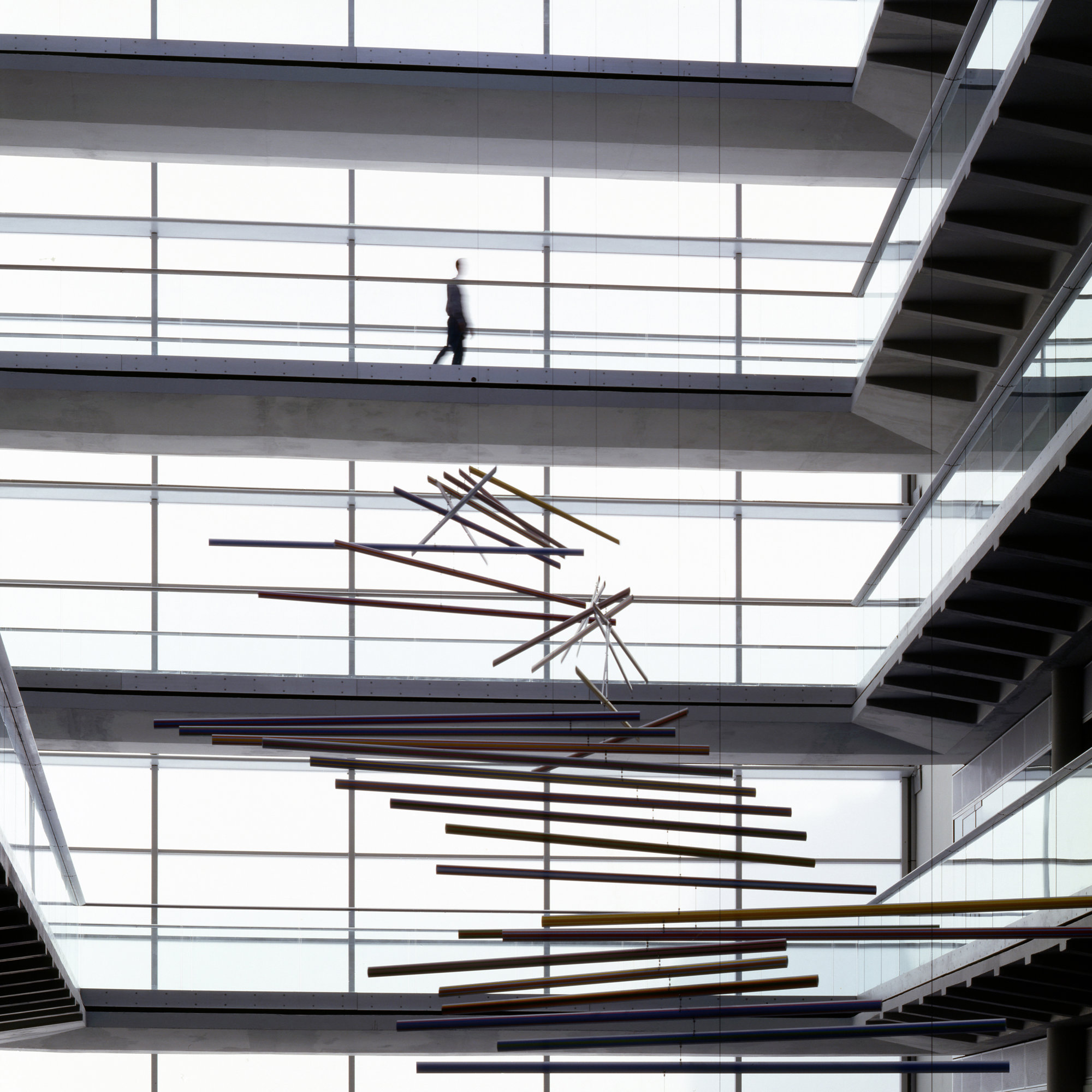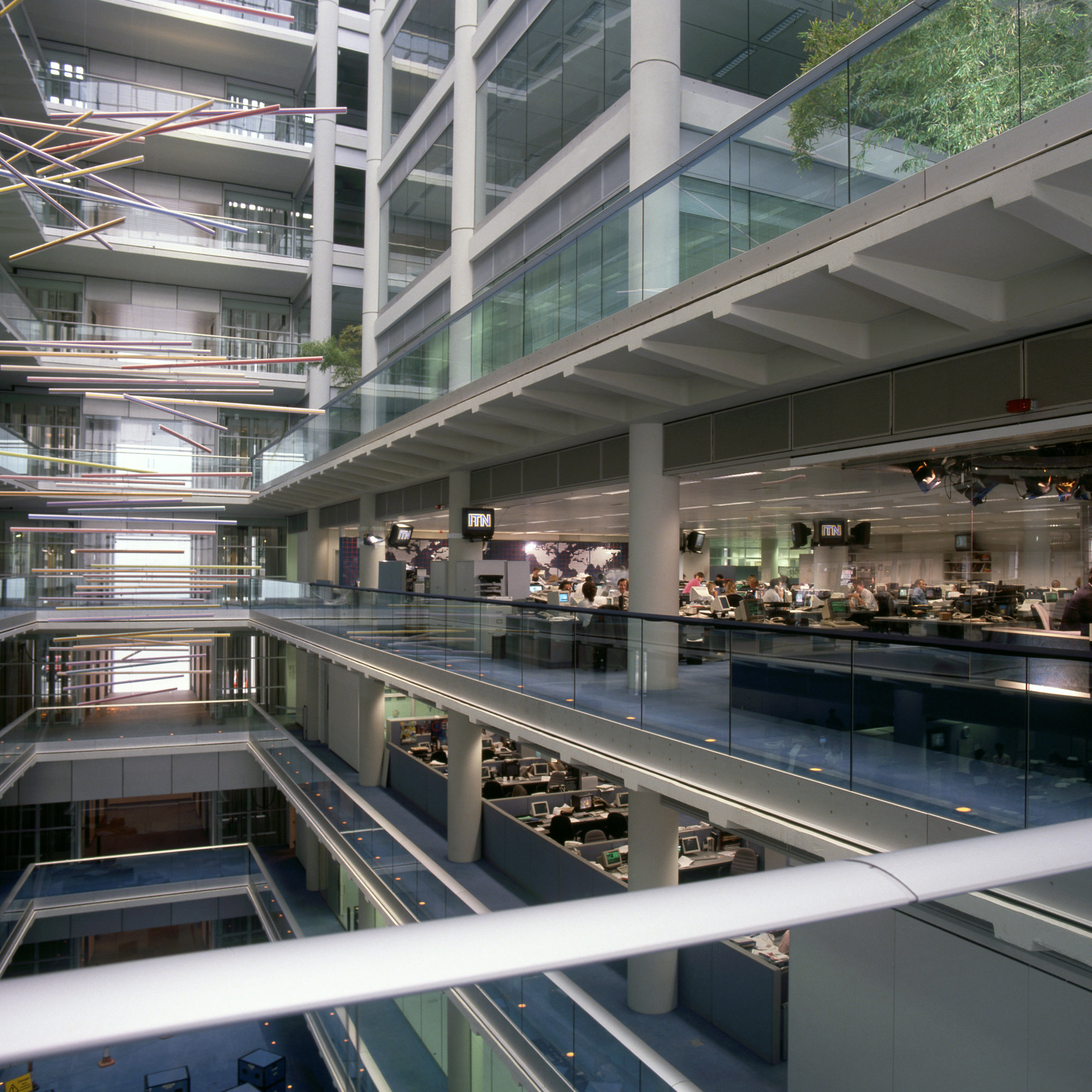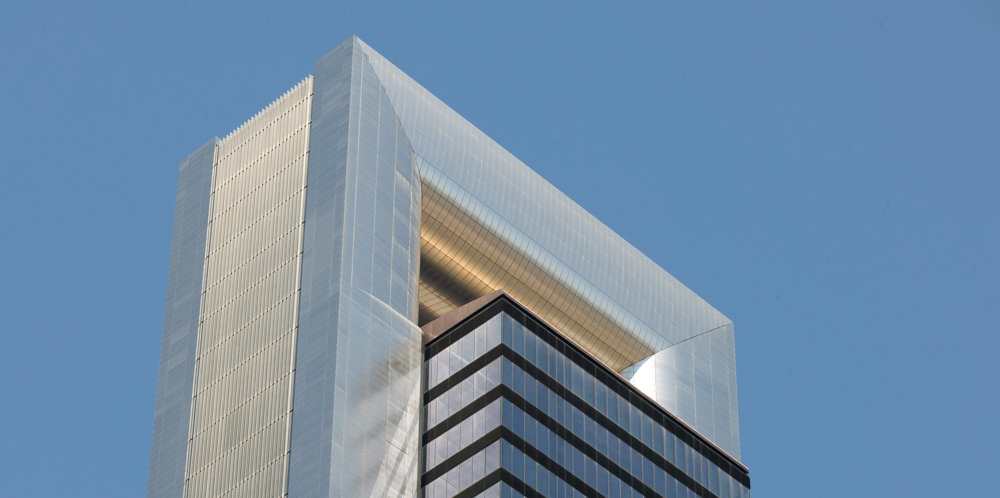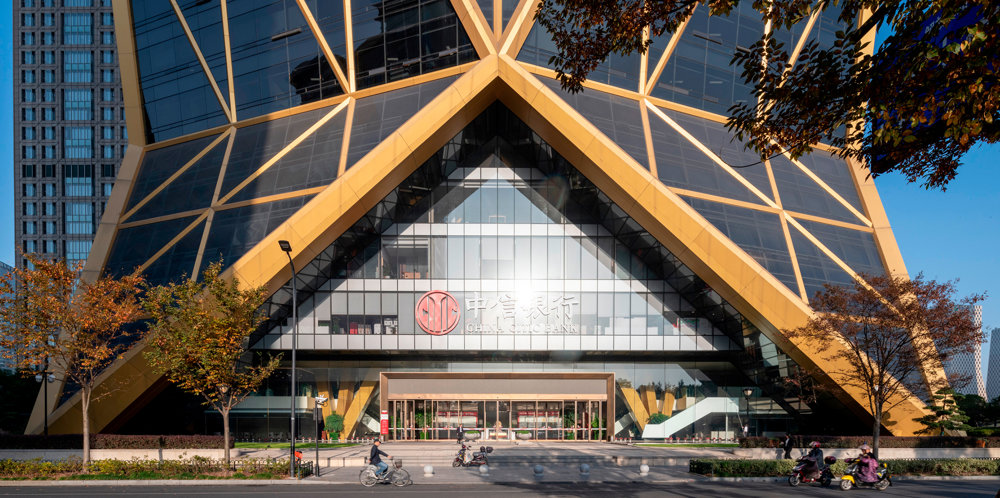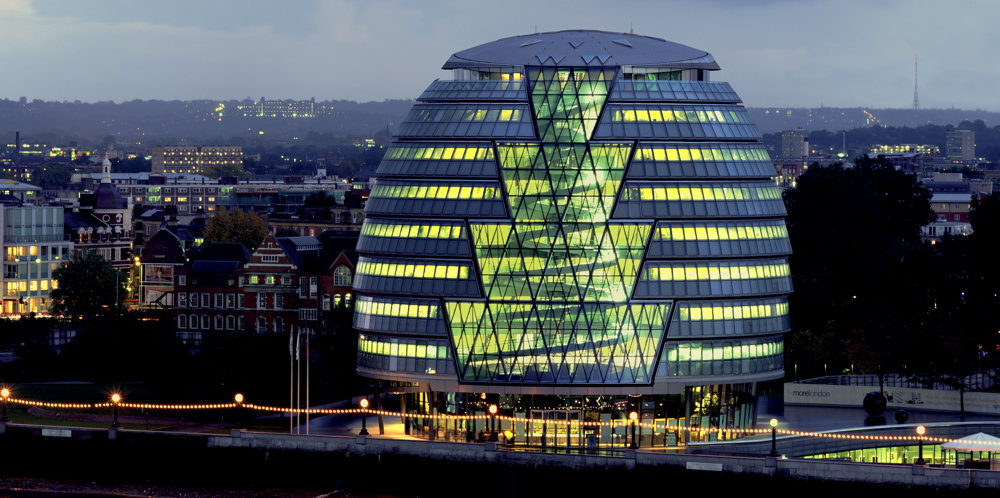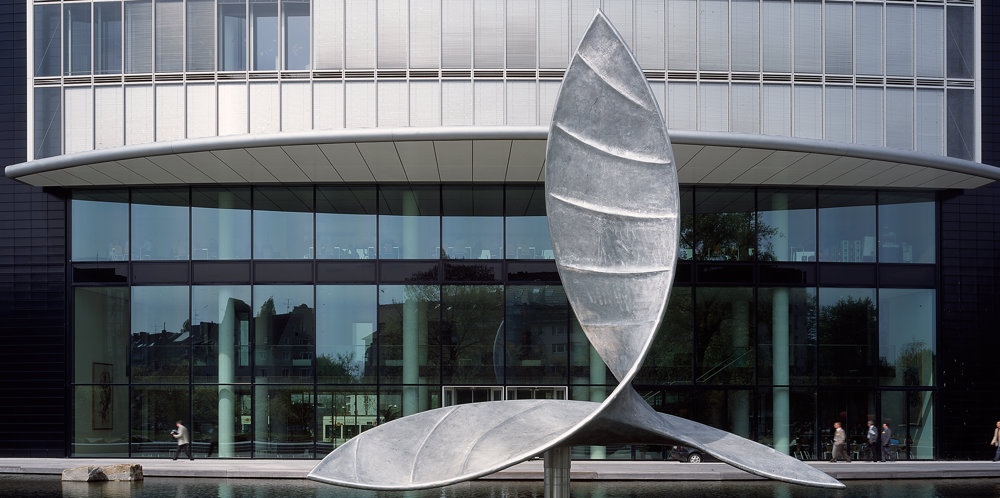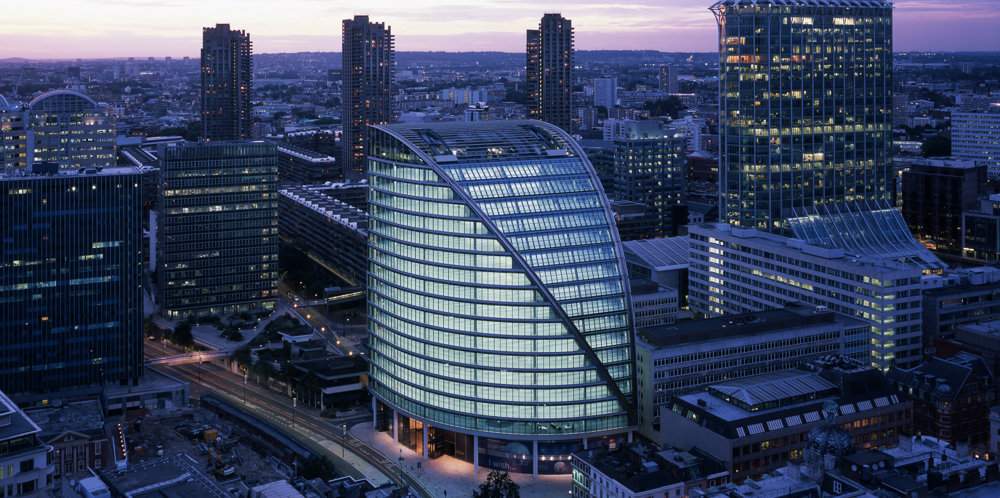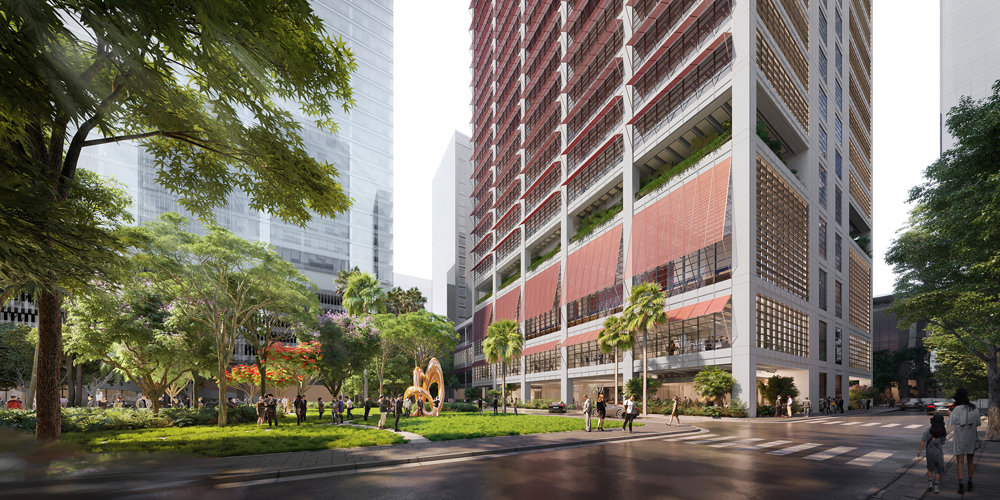The design for ITN’s central London headquarters set out to challenge preconceived ideas about the business of gathering and disseminating news. The project also advanced the practice’s environmental expertise, reconciled the constraints of a speculative office building with the requirements of its key tenant, and demonstrated that a building can be sensitive to its context and still generate a memorable image.
The site, on Gray’s Inn Road, had been vacated by Times Newspapers following its move to new premises at Wapping. It included a vast basement, where the old newspaper printing presses had been located, which was dark and apparently unusable. Utilising the full potential of these subterranean spaces, the scheme situated television studios in the two basement levels and created a full-height atrium, soaring through ten storeys, to draw daylight and diffused sunlight down through the building. The atrium is also the focus of the building’s circulation, acting as both a physical and social heart.
Technically, the principle challenge lay in the building’s ability to handle the high heat loads generated by television lighting, equipment and computers. The solution lay in a double-layer glazed climate wall with an unusually wide cavity of 350mm, creating a blanket of air that insulates both thermally and acoustically. Air is circulated to exhaust surplus heat and the return air collects at the base of the double-glazed wall, where it is drawn up through the cavity. The other main innovation in the building was its uniform 4-metre floor-to-floor height - greater than usually specified in an office building. This, in combination with raised floors containing the cabling required for news broadcasting, allows ‘hot studios’ to be located anywhere within the office floors, close to production teams. As a result, almost all ITN’s news bulletins throughout the day are broadcast from these office floors, using the newsrooms or the atrium as a backdrop. This arrangement has proved so flexible that the studios themselves are now profitably leased to the television industry at large, while the public, looking on to the studio broadcasts, can share some of the excitement of the news-gathering process.










